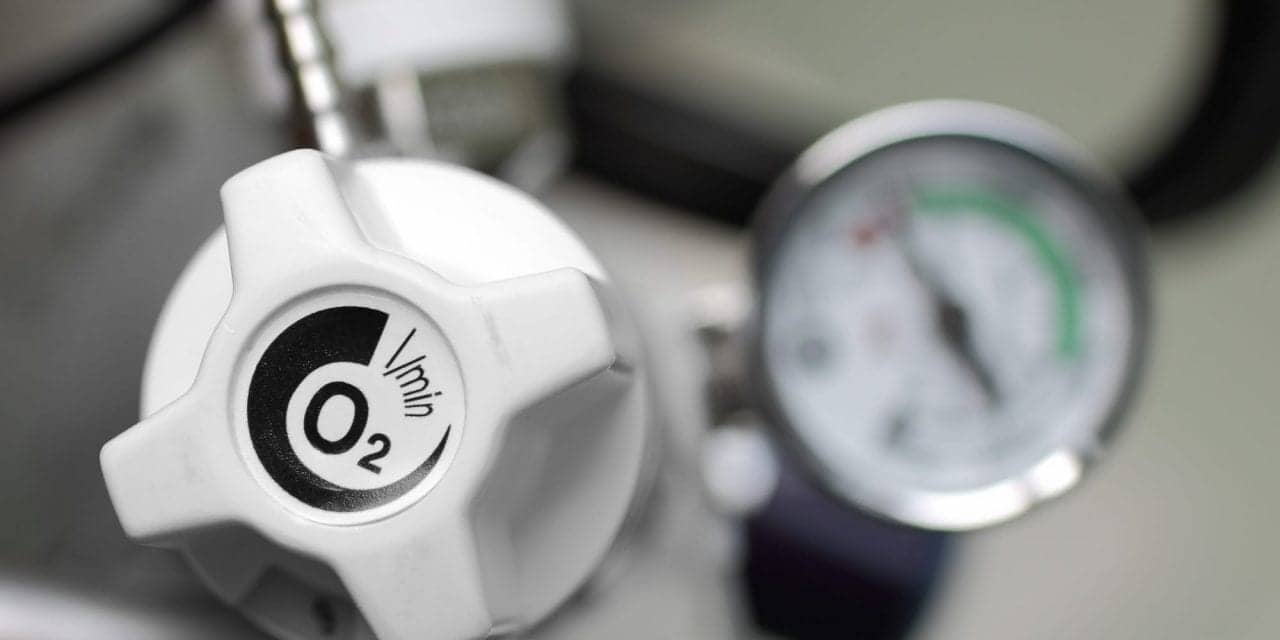A new report published in the Annals of the American Thoracic Society highlights the problems many patients with lung disease experience in getting and using supplemental oxygen.
The survey of 26 physicians, nurses, respiratory therapists, patients and representatives of the Centers for Medicare and Medicaid (CMS), oxygen suppliers, the Food and Drug Administration and patient advocacy groups detail the shortcomings of the current system of providing supplemental oxygen to 1.5 million adults living in the United States.
The panel was unanimous in its finding that delivery of home oxygen services has worsened since the onset of CMS’s Competitive Bidding Program nearly a decade ago.
The workshop authors reviewed available scientific oxygen studies and results of a 2017 survey of nearly 2,000 supplemental oxygen users conducted by the ATS Nursing Assembly.
The survey found:
- Half of all respondents reported problems with their oxygen, including equipment malfunction, being too heavy to manage physically and lack of portability, especially when traveling.
- 70 percent of all patients reported that they had no more than four hours of portable oxygen, and yet, 81 percent of respondents said they wanted more than five hours’ supply.
- Patients who have been hospitalized or gone to the ER in the last year were more likely to report problems. So, too, were patients who had not received oxygen education from a health care professional.
- Liquid oxygen, which is typically used by high flow patients and those who need maximum portability, is often not available in many parts of the country, especially in rural areas, where the costs of regular delivery are prohibitive. Instead companies provide either “E tanks,” heavy cylinders of compressed oxygen, or oxygen concentrators, which remove nitrogen to provide higher levels of oxygen from the ambient air.
“The survey was the first to ask patients about their experiences with oxygen equipment, suppliers and insurers and how their lives were negatively impacted by gaps in the system,” said Susan S. Jacobs, RN, MS, chair of the workshop and a nurse at the Center for Advanced Lung Disease at Stanford University. “As nurses trying to keep supplemental oxygen patients working and otherwise active, we realized the problems had become unacceptable and that our patients needed advocates.”
She added that the workshop was “the necessary next step” because it brought together all the stakeholders surrounding supplemental oxygen to better understand the barriers to quality service, and potential solutions.
The report attributes some of the problems patients report to the “unintended consequences” of the CMS Competitive Bidding Program and cuts in reimbursements to durable medical equipment companies. According to the American Association for Home Care, the number of DME companies has declined by about 40% in the last five years.
These cutbacks, the workshop authors believe, may have contributed to increased complaints about unreliable equipment, inconvenient delivery schedules, poor communications between DME providers and patients, and fewer respiratory therapists available to educate and test patients at home.
The workshop authors report that the increasing use of E tanks and portable oxygen concentrators, instead of liquid oxygen, in many areas of the country appears to contribute to increased anxiety and social isolation. E tanks are too heavy for many patients to handle and restrict mobility, and portable oxygen concentrators cannot provide the high flow oxygen rates some patients need.
Among the workshop report’s other conclusions:
- Many healthcare providers who prescribe oxygen lack the knowledge to prescribe the best oxygen delivery devices for their patients.
- Patients with certain lung disease and those with higher oxygen needs must have greater access to lightweight, higher flow liquid oxygen systems within the constraints of CMS reimbursement.
- Innovative approaches to patient education, such as remote monitoring and telemedicine, would likely improve the current state of absent or fragmented communication and follow up. Research is needed to develop and test these new education models.
- Research is also needed to better determine which patients will benefit from oxygen therapy, and to devise a new generation of portable oxygen devices.
“This workshop report documents for the first time an irrefutable consensus that [the current] oxygen system is broken, and in doing so provides the information necessary to advocate for change,” Ms. Jacobs said.
“I hope this report reminds everybody that while breathing is a subconscious endeavor for most of us, others are always thinking about that next breath.”










I was on liquid oxygen for years until April 2018 and the supplier came in and took it out and set up a home fill unit. I don’t get the oxygen I need from this and can find noone to bring in Liquid as they say it is to expensive and they are all trying to eliminate this product. My freedom has been totally taken away because of this and now it is hard to go anywhere because of all the tanks that I need for a short period away from home. If I forget to change from constant to demand my tank is only good for One hour. The liquid oxygen on demand at 3 was good for 11 hours compared to homefill tank 4 hrs. Now the supplier has not been here since April so they save money and the customer suffers!!!
I work in a BICU and in the past 2 years we have seen an exponential increase in patients burned when smoking on oxygen. Given Respiratory Therapists are no longer educating patients that go home on oxygen, we believe this change had lead to the
increase in the incidence of burns.